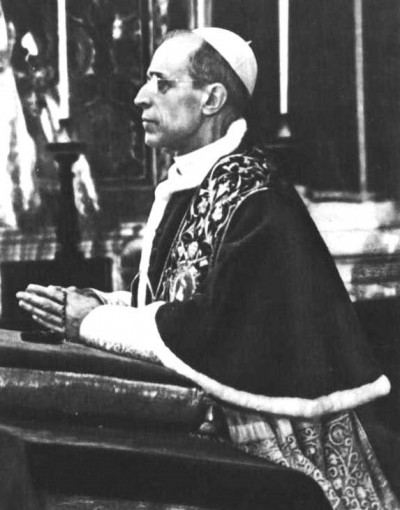Rosary Facing the People
 The Importance of Images
The Importance of Images
Having returned recently from a pilgrimage to one of the world’s foremost Marian sanctuaries, I have been thinking about something curious that struck me there: The Rosary Facing the People. By this I mean that the individual leading the prayers of the Rosary — be he an ecclesiastic or a layman — now stands at the ambo and, speaking into a microphone, gives out the prayers as if he were addressing the people. This is made all the more curious in that a beautiful statue of Our Lady emblematic of this particular sanctuary is behind him to the right. Sacred images are a visual focus for prayer.
Creeping Didacticism
In a not so distant past, when the Rosary was prayed aloud, the individual leading the prayers would, invariably, do so while kneeling at a prie–dieu facing the image of the Blessed Virgin Mary. All were united in turning to the representation of Our Lady’s presence. The shift from the prie–dieu to the ambo, and the change in direction, has brought about and continues to foster an altogether unsettling development in the public recitation of the Rosary, analogous to what happens when the Holy Sacrifice of the Mass is celebrated at a forward–facing altar. Inevitably, the Rosary takes on a didactic character, in contrast to the contemplative, supplicatory, and doxological movement that has always been its very soul.
During my pilgrimage I could not help but notice the inflation of a verbose didactic approach to the Rosary. Each decade of the Rosary became an opportunity for someone to hold forth about something. These were not mere meditations on the mysteries but, rather, moralising and exhortatory fervorini stitched together with all the fashionable pastoral buzz words. My sense was that people would have preferred to get on with their prayers, and found all this holding forth wearisome.
A Practice to Be Reviewed
Much can be said in favour of a brief introduction to each of the mysteries of the Rosary. Such an introduction can even constitute a moment of “holy preaching”, but the prayers themselves, it seems to me, ought not be given out from the ambo. This novel practice, which has gained ground everywhere, calls undue attention to the leader and introduces a strangely divisive dynamic into a beautiful prayer that is, by its very nature, unifying and simple.
